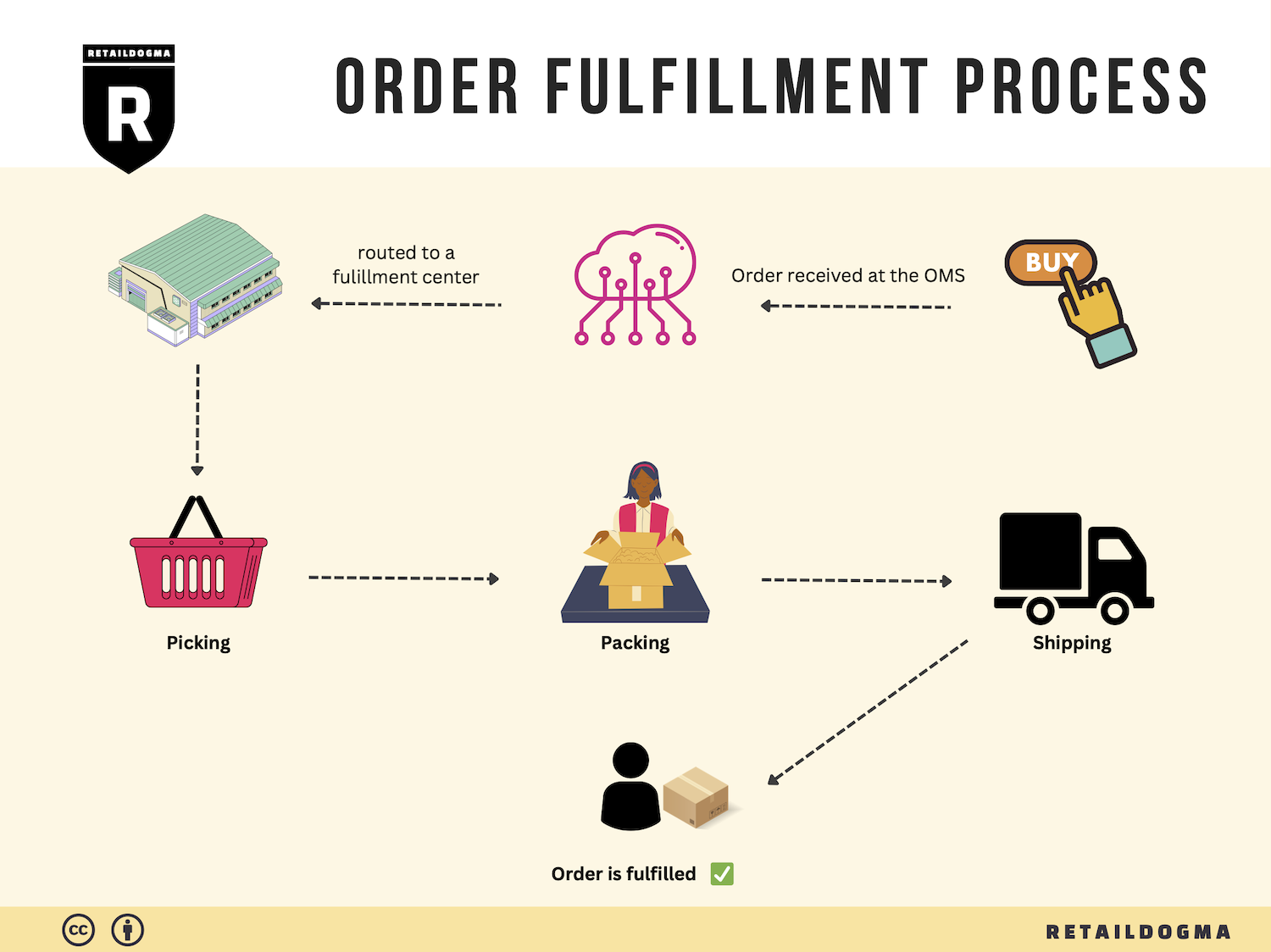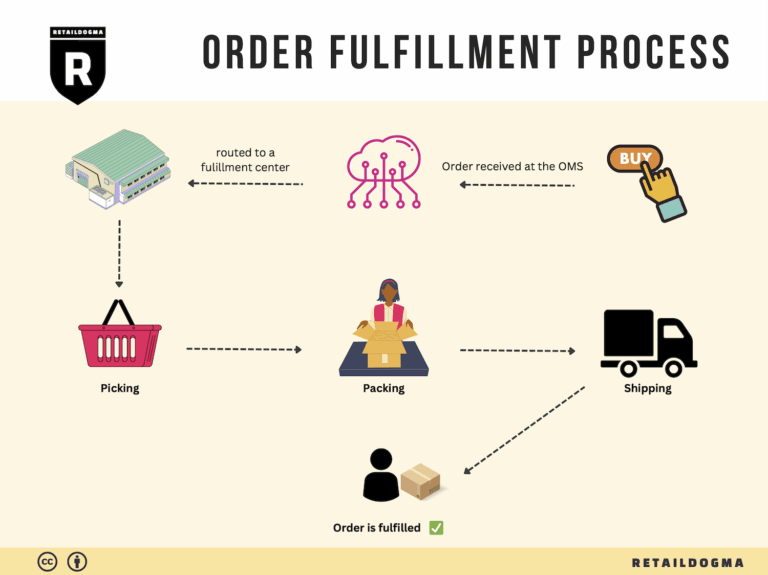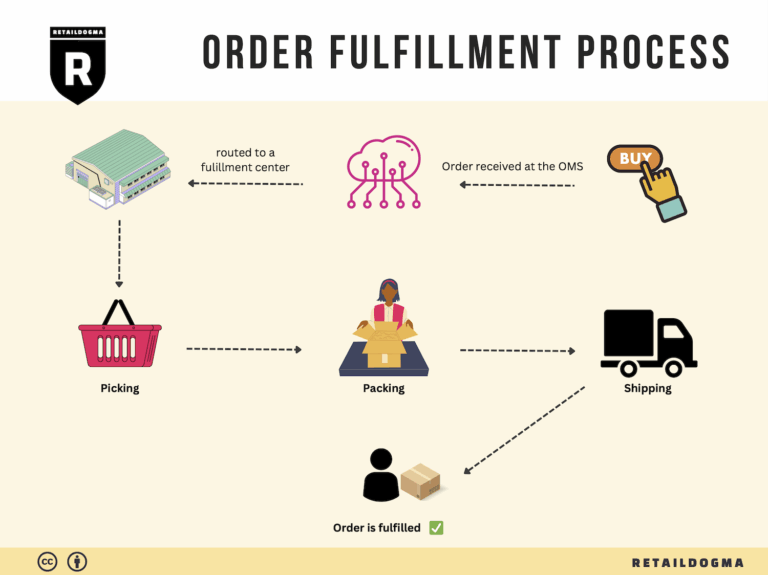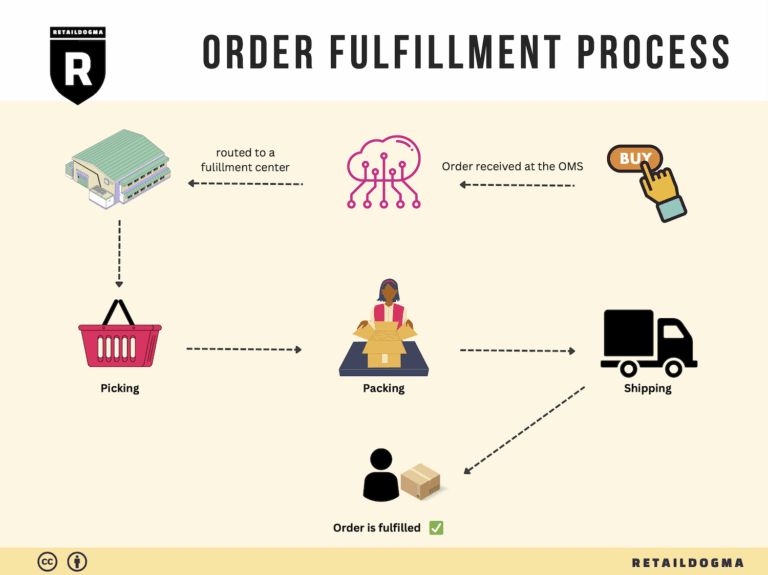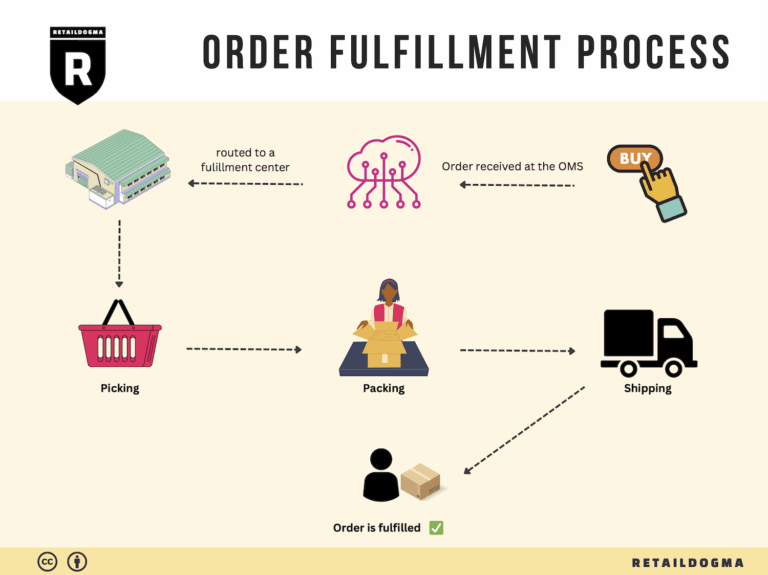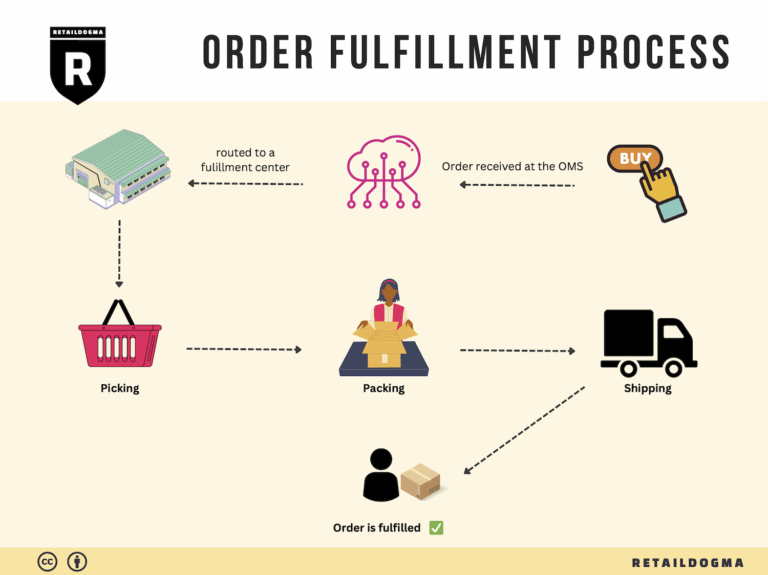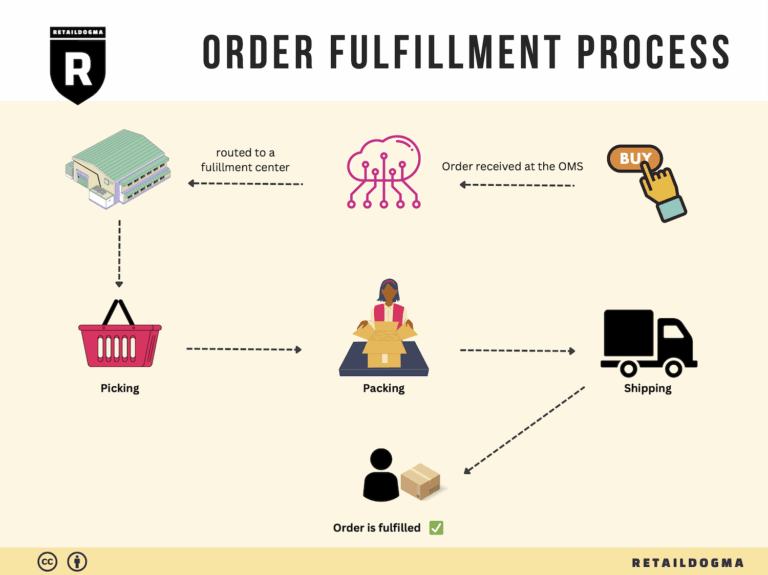Ecommerce Fulfillment Services: The Ultimate Guide (2025)
What is E-commerce Fulfillment? An Introduction for Growing Businesses
Understanding E-commerce Fulfillment: A Pathway to Efficiency
As a growing online business, you may find yourself overwhelmed with the logistics of packing and shipping orders. The excitement of new sales can quickly turn into a logistical nightmare as you juggle inventory management, packaging, and timely delivery. The process of getting a product into the hands of a customer—known as fulfillment—can be complex, yet it is a critical component of your e-commerce success.
E-commerce fulfillment encompasses everything involved in processing an order from the moment a customer clicks “buy” to the time they receive their product. This includes picking items from your inventory, packing them securely, and arranging for shipping. For many businesses, especially those experiencing rapid growth, managing fulfillment in-house becomes unsustainable. This is where understanding your fulfillment options becomes essential.
In this guide, we will explore the various fulfillment models available to e-commerce businesses. From traditional self-fulfillment to outsourcing to third-party logistics providers (3PL) and utilizing services like Fulfillment by Amazon (FBA), each model has its own set of advantages and considerations. We’ll discuss the core services these providers offer, such as inventory management, order processing, and shipping logistics, to help you identify which option aligns best with your business needs.
Choosing the right fulfillment partner can significantly impact your operational efficiency and customer satisfaction. This guide will provide insights on how to evaluate potential partners based on factors like service quality, shipping speed, and pricing structures. Understanding the costs associated with different fulfillment options is crucial for maintaining healthy profit margins, especially as you scale.
Ultimately, our goal is to empower you—whether you are an e-commerce business owner, an operations manager, or an entrepreneur—by equipping you with the knowledge necessary to make informed decisions about your logistics strategy. By mastering the intricacies of e-commerce fulfillment, you can streamline your operations, enhance customer experiences, and position your business for sustainable growth.
What You’ll Learn In This Guide
- What is E-commerce Fulfillment? An Introduction for Growing Businesses
- The Order Fulfillment Process: From ‘Buy’ Button to Customer’s Door
- Comparing Fulfillment Models: In-House vs. 3PL vs. Dropshipping
- A Deep Dive into Amazon FBA: Pros, Cons, and Who It’s For
- Core Services Offered by Fulfillment Centers
- How to Choose a Fulfillment Partner: A 6-Point Checklist
- Understanding Fulfillment Pricing: A Breakdown of Common Fees
- Frequently Asked Questions (FAQs) about Fulfillment
- Conclusion: Is Outsourcing Fulfillment the Right Move for Your Business?
- Important Disclaimer
The Order Fulfillment Process: From ‘Buy’ Button to Customer’s Door
1. Receiving Inventory
The order fulfillment process begins with receiving inventory. This crucial step involves accepting shipments from suppliers and vendors, checking the contents against purchase orders, and ensuring that all items are accounted for and in good condition. Businesses often utilize Stock Keeping Units (SKUs) to identify and track individual products efficiently.
Importance: Proper inventory receiving is vital for maintaining accurate stock levels, minimizing discrepancies, and ensuring that customers can receive their orders on time. Effective receiving processes help prevent stockouts and overstock situations, both of which can significantly impact sales and customer satisfaction.
Key Term: SKU (Stock Keeping Unit) – A unique identifier for each product that helps in tracking inventory throughout the supply chain.
2. Warehouse Storage
Once the inventory is received and verified, it is then stored in the warehouse. This step involves categorizing and organizing products in a way that maximizes efficiency and accessibility. Businesses may employ different storage systems, such as pallet racking or shelving, to optimize space.
Importance: Effective warehouse storage not only ensures that products are easy to find but also minimizes the time spent locating items during the picking process. Well-organized inventory can lead to faster order fulfillment and improved overall operational efficiency.
Key Term: Inventory Management System (IMS) – Software that helps businesses manage and track inventory levels, orders, sales, and deliveries.
3. Order Picking
When a customer places an order, the next step is order picking, where staff retrieve the purchased items from the warehouse. This process can be done manually or through automated systems. Businesses often use pick lists—documents that outline the items to be gathered, including their locations within the warehouse—to streamline this process.
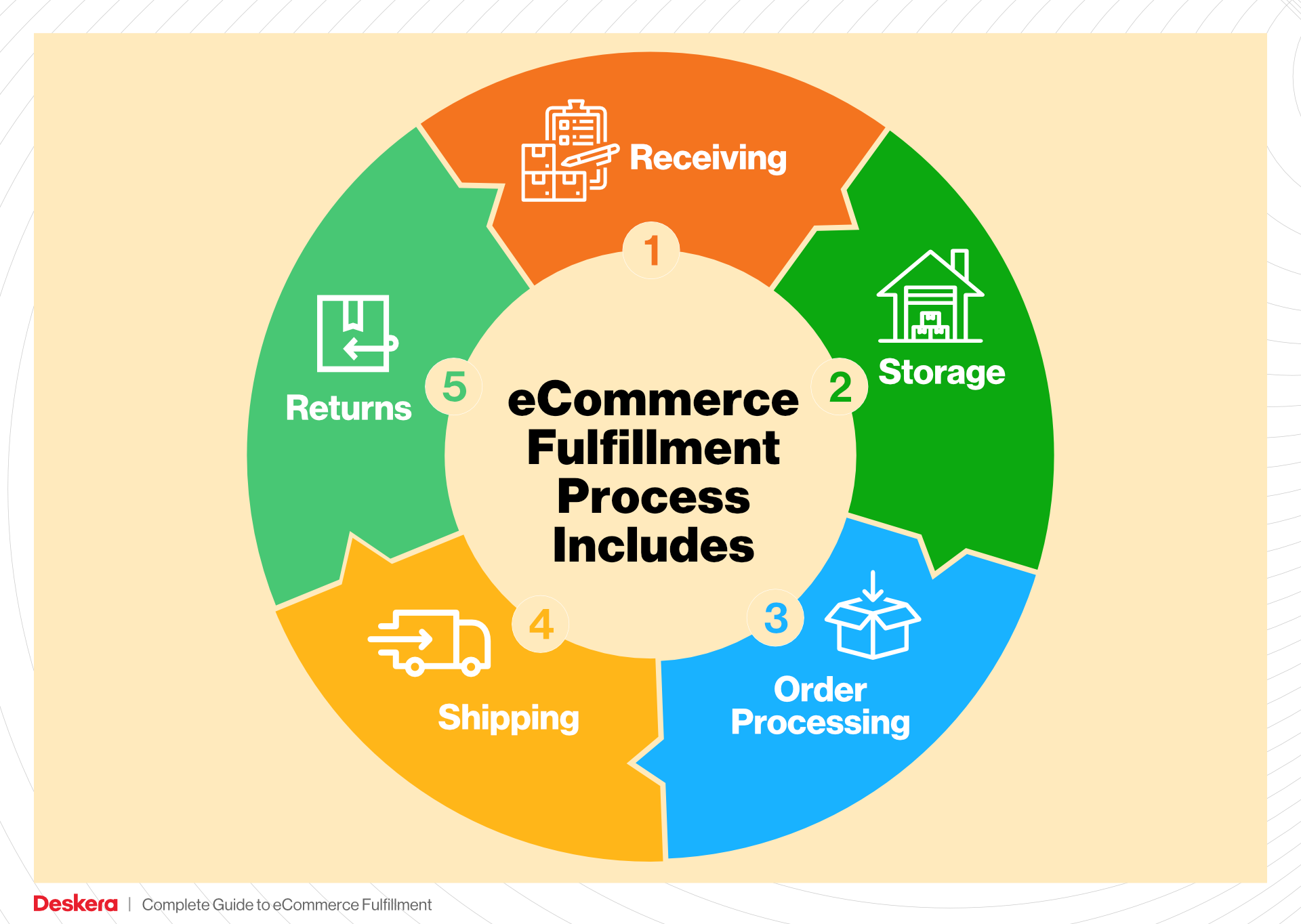
Importance: The accuracy and speed of order picking are critical to customer satisfaction. Delays or mistakes in this step can lead to incorrect orders being shipped, resulting in returns and unhappy customers. Implementing efficient picking strategies, such as batch picking or wave picking, can significantly enhance operational effectiveness.
Key Term: Pick List – A document that specifies which items to retrieve for fulfilling a customer order, including quantities and locations.
4. Order Packing
After items are picked, they move on to the packing stage. Here, products are carefully packed into boxes or envelopes, often accompanied by packing slips that detail the contents of the order. Packaging materials should be chosen based on the nature of the products to ensure they arrive at the customer’s door undamaged.
Importance: Proper packing is essential for protecting products during transit and ensuring a positive unboxing experience for customers. Additionally, using the right packaging can help optimize shipping costs by reducing dimensional weight charges.
Key Term: Packing Slip – A document included with the shipment that lists the items contained in the package, helping customers verify their orders upon receipt.
5. Shipping & Delivery
The final step in the order fulfillment process is shipping and delivery. Once orders are packed, they are labeled and handed over to carriers for transportation. Businesses must choose appropriate shipping methods and partners based on factors like cost, delivery speed, and destination.
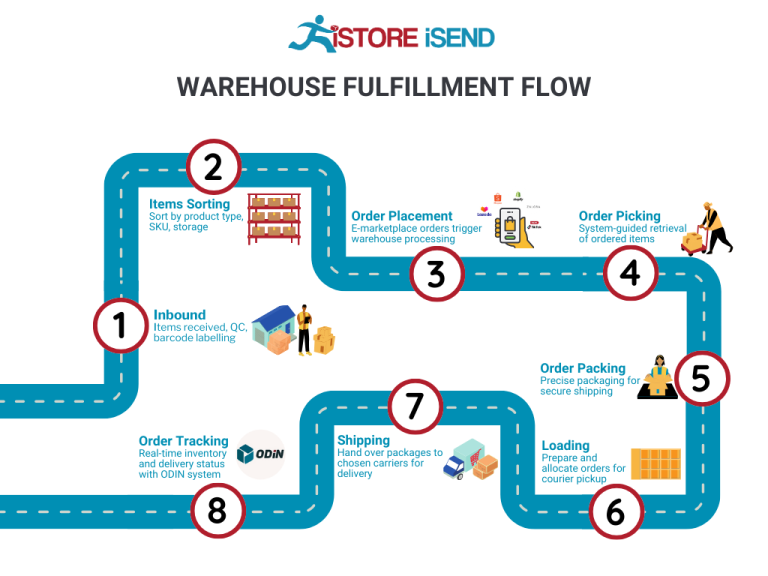
Importance: Timely and accurate delivery is a cornerstone of customer satisfaction in e-commerce. Customers expect their orders to arrive quickly and in good condition. Efficient shipping processes not only enhance customer loyalty but can also provide a competitive edge in the marketplace.
Key Term: Last-Mile Delivery – The final step of the delivery process, where the package is transported from a transportation hub to the customer’s doorstep, often being the most critical and expensive part of the shipping journey.
By following these five steps, e-commerce businesses can create a streamlined order fulfillment process that meets customer expectations and supports scalability as they grow. Each stage plays a vital role in ensuring that products move efficiently from the point of sale to the customer’s door, ultimately enhancing the overall shopping experience.
Comparing Fulfillment Models: In-House vs. 3PL vs. Dropshipping
Fulfillment Model Comparison
| Model | Who Handles Inventory | Best For (Business Stage) | Key Advantage | Key Disadvantage |
|---|---|---|---|---|
| In-House Fulfillment | Business Owner/Staff | Startups, Small Businesses | Full control over inventory and customer experience | Higher operational costs and labor requirements |
| Third-Party Logistics (3PL) | Third-Party Provider | Growing Businesses | Scalability and reduced operational burden | Less control over fulfillment process and quality |
| Dropshipping | Supplier/Manufacturer | New Entrepreneurs, Low-Cost Startups | Low upfront investment and risk | Limited control over inventory and shipping times |
In-House Fulfillment
In-house fulfillment involves managing the entire order fulfillment process internally. This model is typically favored by startups and small businesses that want to maintain complete control over their inventory and customer service. By handling everything from storage to packing and shipping, businesses can ensure that their products are managed according to their specific standards and requirements. This model is particularly beneficial for companies that sell unique or high-value items where customer experience is paramount. However, the major drawback is that in-house fulfillment can be labor-intensive and costly, requiring significant resources for warehousing, staffing, and logistics management. As businesses grow, they may find it increasingly challenging to keep up with order volumes and operational complexities, leading many to consider outsourcing options.
Third-Party Logistics (3PL)
Third-party logistics (3PL) providers offer a scalable solution for businesses looking to expand their fulfillment capabilities without investing heavily in infrastructure and staffing. This model is ideal for growing businesses that experience fluctuating order volumes and require flexibility in their logistics operations. By partnering with a 3PL, businesses can leverage the provider’s expertise in warehousing, inventory management, and shipping logistics, allowing them to focus on core activities like marketing and product development. 3PLs typically operate multiple fulfillment centers strategically located to optimize shipping times and reduce costs. However, one of the primary disadvantages of using a 3PL is the reduced control over the fulfillment process. Businesses must rely on their partner to maintain quality standards and meet customer expectations, which can be a concern if the 3PL does not align with the business’s values or operational standards.
Dropshipping
Dropshipping is a fulfillment model that allows e-commerce entrepreneurs to sell products without holding any inventory themselves. In this arrangement, businesses take orders from customers and forward them directly to a supplier or manufacturer, who then ships the products directly to the customer. This model is particularly attractive for new entrepreneurs and those looking to minimize upfront costs and risks associated with inventory management. Since there’s no need to invest in stock or warehousing, dropshipping enables businesses to offer a wide range of products without significant financial commitment. However, dropshipping comes with its own set of challenges. Merchants often face limited control over inventory levels, shipping times, and overall customer experience. Additionally, reliance on suppliers can lead to potential delays and inconsistencies that may negatively affect customer satisfaction. As a result, while dropshipping can facilitate entry into the e-commerce space, it requires careful supplier selection and management to ensure a smooth operational flow.
Conclusion
Choosing the right fulfillment model is critical for the success of an e-commerce business. Each model—In-House Fulfillment, Third-Party Logistics (3PL), and Dropshipping—offers distinct advantages and challenges, which should align with your business stage, operational capacity, and growth ambitions. As businesses scale, they may find that a hybrid approach, combining elements of different models, best meets their needs. It’s essential to evaluate your specific requirements, customer expectations, and long-term goals when deciding which fulfillment strategy to adopt.
A Deep Dive into Amazon FBA: Pros, Cons, and Who It’s For
What is Fulfillment by Amazon (FBA)?
Fulfillment by Amazon (FBA) is a service provided by Amazon that allows sellers to store their products in Amazon’s fulfillment centers. Amazon takes care of the logistics involved in fulfilling customer orders, including storage, packaging, shipping, and customer service. Once a seller enrolls in FBA, they can leverage Amazon’s vast distribution network to reach customers across the globe efficiently.
How FBA Works
-
Product Listing and Enrollment: Sellers create product listings on Amazon and enroll their products in the FBA program.
-
Shipping Inventory: Sellers ship their products to Amazon’s fulfillment centers. Amazon provides guidelines on how to package and label items for optimal storage and handling.
-
Storage and Order Processing: Once the inventory is received, it is stored in Amazon’s warehouses. When a customer places an order, Amazon picks, packs, and ships the product directly to the customer.
-
Customer Service and Returns: Amazon handles all customer inquiries, returns, and refunds related to FBA orders, offering a hassle-free experience for sellers.
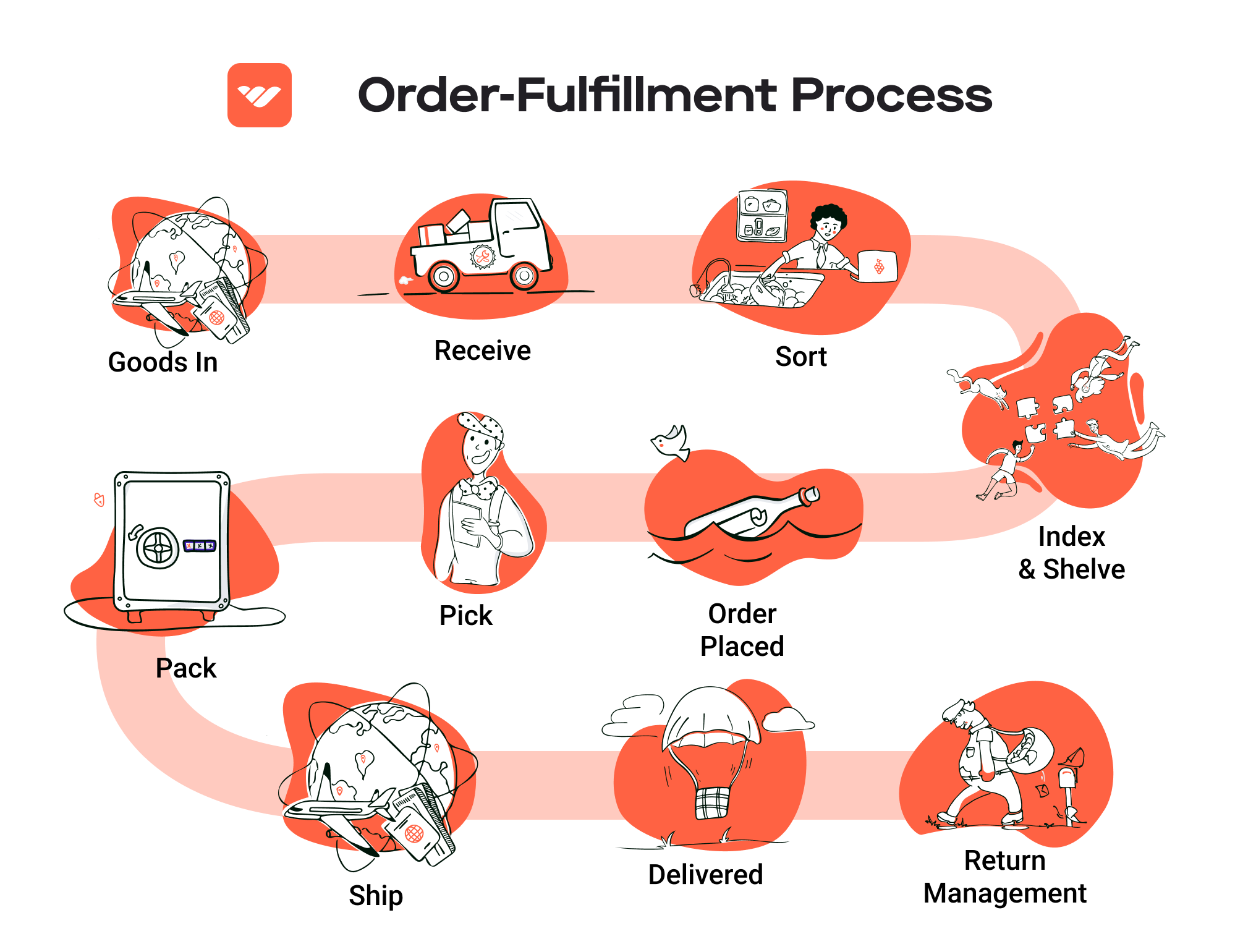
-
Performance Monitoring: Sellers can track their inventory levels, sales performance, and other metrics through the Amazon Seller Central dashboard.
Pros of Fulfillment by Amazon
Prime Eligibility
One of the standout benefits of FBA is that products fulfilled through Amazon are automatically eligible for Amazon Prime. This is a significant advantage, as Prime members tend to prefer products that offer free and fast shipping. Being part of the Prime program can lead to increased sales and higher visibility on the platform.
Customer Trust
Amazon has built a reputation for reliability and customer service. By using FBA, sellers can leverage this trust, as customers often feel more secure purchasing products that are fulfilled by Amazon. The backing of Amazon’s customer service and return policies can enhance the shopping experience, leading to increased sales and positive reviews.
Multi-Channel Fulfillment
FBA is not limited to Amazon sales. Sellers can utilize FBA to fulfill orders from other sales channels, such as their own websites or other e-commerce platforms. This multi-channel fulfillment capability allows businesses to streamline their logistics and inventory management, making it easier to manage a diverse product lineup across various platforms.
Cons of Fulfillment by Amazon
High Fees
While FBA can offer significant advantages, it is not without its costs. Sellers must pay for storage fees, which can increase during peak seasons, and fulfillment fees that vary based on product size and weight. These fees can eat into profit margins, especially for smaller sellers or those with lower-priced items.
Strict Inventory Rules
Amazon enforces stringent inventory management policies. Sellers must adhere to specific guidelines regarding product preparation, packaging, and labeling. Failure to comply can result in additional charges or even the rejection of inventory at fulfillment centers. This can be particularly challenging for new sellers who may not be familiar with Amazon’s requirements.
Commingling Risks
When using FBA, sellers’ inventory may be commingled with that of other sellers. This means that products can be mixed together, leading to potential issues with product quality and authenticity. If a customer receives a defective or counterfeit item from a commingled batch, it can harm the seller’s reputation, even if the seller’s own inventory was not at fault.
Who is FBA Best For?
FBA is particularly beneficial for specific types of sellers:
-
New Sellers: For entrepreneurs just starting, FBA can provide a fast and efficient way to enter the market without needing to invest heavily in logistics.
-
Small to Medium-Sized Businesses: Businesses that want to scale quickly without the burden of managing their own fulfillment operations can benefit greatly from FBA.
-
Brands with High Demand: Sellers with products that have high sales velocity can take full advantage of the logistics efficiency and Prime eligibility offered by FBA.
-
Sellers with Diverse Product Lines: Those looking to manage multiple sales channels can streamline their operations using FBA’s multi-channel fulfillment capability.
-
Brands Seeking Enhanced Visibility: Sellers who want to boost their product visibility and sales on Amazon can leverage the trust and logistics network of Amazon through FBA.
In conclusion, Fulfillment by Amazon can be a powerful tool for e-commerce sellers looking to scale their businesses efficiently. While it comes with its set of challenges, the benefits of Prime eligibility, customer trust, and multi-channel fulfillment make it a compelling option for many. Careful consideration of costs and inventory management will be key to maximizing the advantages of FBA while mitigating its risks.
Core Services Offered by Fulfillment Centers
Inventory Management & Warehousing
Inventory management is a critical component of e-commerce fulfillment, ensuring that businesses maintain optimal stock levels while minimizing storage costs. Fulfillment centers offer advanced inventory management systems that track stock levels in real-time, helping businesses stay informed about their inventory status.
Benefits:
-
Reduced Overhead Costs: By utilizing a fulfillment center’s warehousing facilities, e-commerce businesses can save on the costs associated with maintaining their own warehouse, such as rent, utilities, and staffing.
-
Scalability: As an e-commerce business grows, so too does its inventory needs. Fulfillment centers provide the flexibility to scale storage space up or down based on demand, allowing businesses to respond quickly to market changes without the burden of long-term leases.
-
Enhanced Accuracy: Automated inventory management systems reduce the risk of human error in stock counting and order fulfillment, leading to improved order accuracy and customer satisfaction.
-
Centralized Operations: A fulfillment center often stores products closer to key markets, which can streamline logistics and expedite shipping times. This strategic placement helps businesses meet customer expectations for fast delivery.
Pick and Pack Services
Pick and pack services are essential for the order fulfillment process. This service involves selecting the right items from the inventory and packing them for shipment. Fulfillment centers streamline this process using technology and trained personnel to ensure efficiency and accuracy.
Benefits:
-
Time Efficiency: Fulfillment centers employ advanced picking technologies and trained staff, which significantly speeds up the order fulfillment process. This efficiency allows businesses to process more orders in less time, increasing overall productivity.
-
Customization: Many fulfillment centers offer customizable packing solutions, allowing businesses to enhance their brand experience with personalized packaging. This can include branded boxes, tissue paper, or promotional materials included in the shipment.
-
Quality Control: Fulfillment centers implement strict quality control measures during the picking and packing process. This ensures that the correct items are shipped, and that they are in perfect condition, thereby reducing return rates and increasing customer satisfaction.
-
Reduced Labor Costs: By outsourcing pick and pack services to a fulfillment center, businesses can save on labor costs associated with hiring, training, and managing an in-house packing team.
Kitting and Assembly
Kitting and assembly services involve the grouping of individual items into a single package or the assembly of products that require multiple components. This service is particularly beneficial for businesses that sell products requiring assembly or bundled offerings.
Benefits:
-
Streamlined Operations: Kitting allows businesses to pre-package items into kits before orders are received, which can reduce the time spent on fulfilling orders once they come in. This is especially useful for promotional bundles or seasonal offerings.
-
Enhanced Customer Experience: Offering kitted products can enhance the shopping experience by providing customers with ready-to-use solutions, such as DIY kits or gift sets, which can drive higher sales and customer loyalty.
-
Inventory Management: Kitting can simplify inventory management by allowing businesses to track bundled items as a single SKU, reducing complexity in stock management and forecasting.
-
Cost-Effectiveness: By outsourcing kitting and assembly to a fulfillment center, businesses can save on equipment and labor costs, while also benefiting from the center’s expertise in efficiently managing these processes.
Returns Management (Reverse Logistics)
Returns management, also known as reverse logistics, is a crucial service provided by fulfillment centers. It involves processing returns from customers, managing exchanges, and restocking returned items efficiently.
Benefits:
-
Customer Satisfaction: An efficient returns process enhances customer satisfaction and can encourage repeat business. Fulfillment centers often have streamlined systems in place to process returns quickly and effectively.
-
Inventory Replenishment: Fulfillment centers can quickly restock returned items, allowing businesses to minimize losses associated with returns and keep inventory levels accurate.
-
Data Insights: Returns management services often provide valuable insights into return reasons and trends, which can help businesses identify issues with products or improve customer satisfaction strategies.
-
Cost Savings: By outsourcing returns management to a fulfillment center, businesses can reduce the overhead costs associated with handling returns in-house, freeing up resources for other critical areas of their operations.
In summary, fulfillment centers provide a suite of core services designed to optimize e-commerce operations. By leveraging inventory management, pick and pack services, kitting and assembly, and returns management, businesses can scale effectively, enhance customer satisfaction, and maintain a competitive edge in the fast-paced world of online retail.
How to Choose a Fulfillment Partner: A 6-Point Checklist
Location & Warehouse Network
The geographic location of your fulfillment partner’s warehouses significantly impacts shipping times and costs. A strategically located warehouse network can reduce transit times and improve customer satisfaction.
Why It’s Important:
– Proximity to major markets can lead to faster shipping and lower shipping costs.
– Access to multiple fulfillment centers can help ensure inventory is closer to your customers.
Questions to Ask:
– Where are your warehouses located, and how do they align with my target markets?
– How do you manage inventory across multiple locations?
– What is your average shipping time to major regions?
Technology & Integrations
The technology used by a fulfillment partner is critical for seamless operations. A robust technology stack ensures real-time inventory tracking, order management, and reporting.
Why It’s Important:
– Integrations with your existing e-commerce platform (like Shopify, WooCommerce, etc.) can streamline operations.
– Advanced technology can offer better visibility into order statuses, inventory levels, and fulfillment metrics.
Questions to Ask:
– What technology platforms do you use for order fulfillment?
– How do you integrate with e-commerce platforms and other software tools?
– Can I access real-time data and analytics on orders and inventory?
Specializations (e.g., Cold Storage, Oversized Items)
Different businesses have unique fulfillment needs, and some 3PL providers specialize in certain areas, such as cold storage, handling fragile items, or oversized products.
Why It’s Important:
– Choosing a partner with the right specialization can prevent damage, spoilage, or compliance issues with sensitive products.
– Specialized services can enhance customer satisfaction by ensuring products are stored and shipped correctly.
Questions to Ask:
– What types of products do you specialize in handling?
– Do you have specific capabilities for handling temperature-sensitive products or oversized items?
– How do you ensure compliance with industry regulations related to my products?
Scalability & Capacity
As your business grows, your fulfillment needs will change. It’s essential to partner with a provider that can scale operations to meet increasing demand without compromising service quality.
Why It’s Important:
– A scalable fulfillment partner can accommodate seasonal spikes in demand and long-term growth.
– Ensuring capacity for future expansion can prevent delays and operational headaches.
Questions to Ask:
– How do you handle peak seasons or sudden increases in order volume?
– What is your current capacity, and how do you plan to expand it in the future?
– Can you accommodate custom packaging or special handling as my business grows?
Pricing and Contracts
Understanding the pricing structure and contract terms is crucial for budgeting and long-term planning. Hidden fees or unfavorable terms can significantly impact your bottom line.
Why It’s Important:
– Transparent pricing helps you forecast costs accurately and avoid unexpected expenses.
– Clear contract terms protect your business interests and ensure you know what services are included.
Questions to Ask:
– Can you provide a detailed breakdown of your pricing structure?
– Are there any additional fees I should be aware of (e.g., storage fees, pick-and-pack fees)?
– What are the terms of your contract, and is there flexibility for renegotiation?
Customer Support & Reviews
Strong customer support is essential for resolving issues quickly and maintaining a smooth fulfillment process. Additionally, reviews and testimonials can provide insights into the partner’s reliability and service quality.
Why It’s Important:
– Effective customer support can minimize disruptions and enhance operational efficiency.
– Positive reviews from other clients can validate the partner’s credibility and performance.
Questions to Ask:
– What support options do you offer (e.g., dedicated account manager, 24/7 support)?
– How do you handle issues or discrepancies in order fulfillment?
– Can you provide references or case studies from clients in my industry?
Conclusion
Choosing the right fulfillment partner is a critical decision that can influence your business’s efficiency and customer satisfaction. By using this checklist, you can evaluate potential partners thoroughly and make an informed decision that aligns with your business goals. Prioritize your unique needs, and don’t hesitate to ask detailed questions to ensure that the partner you choose can support your growth and provide a seamless customer experience.
Understanding Fulfillment Pricing: A Breakdown of Common Fees
Initial Setup Fees
When engaging with a fulfillment service, many providers charge an initial setup fee. This fee covers the costs associated with onboarding your business onto their platform, including the integration of your e-commerce system with their fulfillment operations. The setup process typically involves configuring inventory management systems, establishing shipping preferences, and setting up customer service protocols.
The calculation of initial setup fees can vary significantly based on the complexity of your requirements and the fulfillment provider’s pricing structure. Some providers may offer a flat fee, while others might charge based on the number of SKUs or the complexity of integrations required. It’s essential to clarify what services are included in this fee to avoid unexpected costs down the line.
Receiving Fees
Receiving fees are charged when your inventory arrives at the fulfillment center. This fee covers the labor and resources needed to unload, inspect, and properly store your products. The receiving process may include counting items, checking for damages, and entering products into the inventory management system.
These fees are often calculated based on the number of pallets or boxes received, with some providers charging a per-unit fee as well. For example, a fulfillment center might charge $25 per pallet and $0.10 per individual item. Understanding this fee structure is crucial, as it can impact your overall costs, especially if you frequently restock or receive large shipments.
Storage Fees (per pallet/bin)
Storage fees are incurred for keeping your inventory in the fulfillment center’s warehouse. These fees are typically calculated on a monthly basis and can vary based on the space your products occupy, which is usually measured in pallets or bins.
Storage fees might be structured as a flat monthly rate per pallet or cubic foot. For instance, a provider may charge $20 per pallet per month. Some fulfillment centers also offer tiered pricing, where the cost decreases with higher volumes of storage. It’s important to monitor your inventory turnover rates to avoid paying for excess storage, as holding onto slow-moving stock can lead to unnecessary expenses.
Pick & Pack Fees (per item/order)
Pick and pack fees are charged each time an order is fulfilled. This includes the process of selecting the items from inventory (picking) and preparing them for shipment (packing). The fees can vary depending on the complexity of the packing process, such as the need for special materials or handling.
Typically, fulfillment providers calculate pick and pack fees on a per-item or per-order basis. For example, a provider may charge $0.50 per item picked and $1.00 per order packed. Understanding how these fees are structured is essential, as they can quickly add up, especially for businesses with high order volumes or complex product lines.
Shipping Fees
Shipping fees are one of the most variable components of fulfillment pricing and can significantly impact your overall costs. These fees depend on several factors, including the weight and dimensions of the package, the destination, and the chosen shipping method (e.g., standard, expedited, or same-day delivery).
Shipping fees are typically calculated based on carrier rates, which can fluctuate due to changes in fuel prices or carrier pricing structures. Many fulfillment providers negotiate discounted rates with shipping carriers, which can be passed on to their clients. It’s advisable to request shipping estimates based on your product dimensions and typical order patterns to get a clearer picture of potential costs.
Tips for Getting an Accurate Quote
To ensure you receive an accurate quote from fulfillment providers, consider the following tips:
-
Be Transparent About Your Needs: Clearly outline your business model, order volume, and product types. This information helps providers give you a tailored quote.
-
Request Detailed Pricing Structures: Ask for a breakdown of all potential fees, including any additional charges that might arise based on your specific needs.
-
Negotiate Terms: Don’t hesitate to discuss pricing and terms. Many providers are willing to negotiate fees, especially if you plan on bringing significant business.
-
Evaluate Multiple Providers: Comparing quotes from several fulfillment partners can help you identify the best value and services for your business.
-
Consider Long-Term Costs: Look beyond initial pricing and consider potential long-term costs associated with storage, shipping, and service levels to gauge the true value of a fulfillment partnership.
By understanding these common fulfillment pricing models and approaching providers with clarity and intention, you can make informed decisions that support the growth and efficiency of your e-commerce operations.
Frequently Asked Questions (FAQs) about Fulfillment
1. What is ecommerce fulfillment?
Ecommerce fulfillment refers to the entire process of receiving, processing, and delivering orders to customers. This includes inventory management, picking and packing products, shipping, and handling returns. A well-structured fulfillment strategy ensures timely delivery and a positive customer experience.
2. What is the difference between a warehouse and a fulfillment center?
A warehouse is primarily a storage facility where products are kept until needed. In contrast, a fulfillment center is designed specifically for processing orders and shipping them directly to customers. Fulfillment centers are equipped with advanced technology and logistics systems to handle inventory more efficiently and expedite shipping.
3. What is a 3PL (Third-Party Logistics)?
A 3PL provider is a company that offers outsourced logistics services, including warehousing, fulfillment, and shipping. By partnering with a 3PL, e-commerce businesses can focus on core activities like marketing and product development while leaving the complexities of order fulfillment to the experts.
4. How much do fulfillment services cost?
Fulfillment service costs can vary widely based on factors such as order volume, storage needs, shipping destinations, and the complexity of services required. Typically, businesses can expect to pay for storage space, per-order processing fees, and shipping costs. It’s advisable to request quotes from multiple fulfillment providers to compare pricing and services.
5. How do I choose the right fulfillment partner for my business?
Selecting a fulfillment partner involves assessing your specific needs, such as order volume, product types, and target markets. Consider factors like shipping speed, inventory management capabilities, integration with your existing systems, and customer service. It’s also helpful to read reviews and request case studies to gauge their reliability.
6. What are the main fulfillment methods available?
The main fulfillment methods include self-fulfillment (managing orders in-house), third-party fulfillment (outsourcing to a fulfillment provider), and dropshipping (where the supplier ships directly to the customer). Each method has its advantages and disadvantages, so consider your business model and growth plans when choosing.
7. What are the benefits of using a fulfillment center?
Utilizing a fulfillment center can offer several benefits, including reduced shipping times, improved order accuracy, scalability as your business grows, and access to advanced technology and logistics expertise. This can enhance customer satisfaction and allow you to focus on scaling your business.
8. How do I manage inventory effectively with a fulfillment partner?
Effective inventory management with a fulfillment partner involves maintaining clear communication about stock levels, setting reorder points, and utilizing inventory management software. Regularly reviewing sales data can help you anticipate demand and optimize your inventory levels to avoid stockouts or overstock situations.
9. Can I use multiple fulfillment centers?
Yes, using multiple fulfillment centers can be an effective strategy for reducing shipping times and costs, especially if you have a wide geographic customer base. Distributing inventory across different locations allows you to ship orders from the nearest center, improving delivery speed and customer satisfaction.
10. What are common challenges faced in order fulfillment?
Common challenges in order fulfillment include managing inventory discrepancies, ensuring timely deliveries, handling returns efficiently, and maintaining cost-effectiveness as order volumes increase. To overcome these challenges, it’s crucial to implement robust inventory management systems, streamline processes, and maintain open communication with your fulfillment partner.
Conclusion: Is Outsourcing Fulfillment the Right Move for Your Business?
Assessing the Value of Outsourcing Fulfillment
Outsourcing fulfillment can be a game-changing decision for e-commerce businesses looking to streamline operations and enhance customer satisfaction. By leveraging a fulfillment service, you can save significant time that would otherwise be spent on managing inventory, packing, and shipping. This allows you to focus on core business activities such as marketing, product development, and customer engagement.
Moreover, outsourcing fulfillment provides scalability. As your order volume increases, a fulfillment partner can efficiently accommodate your growing needs without the burden of expanding your own warehousing or staffing. This flexibility is vital in today’s fast-paced e-commerce environment, where customer expectations for quick and reliable delivery are higher than ever.
Additionally, fulfillment services bring specialized expertise to the table. With established logistics networks, advanced technology for order management, and insights into shipping efficiencies, these partners can optimize your operations in ways that may be challenging for a smaller team to achieve independently. This expertise not only enhances your service quality but can also result in cost savings through better shipping rates and inventory management.
However, the success of outsourcing fulfillment hinges on selecting the right partner. It’s crucial to assess potential providers based on their capabilities, geographical reach, technology integration, and customer support. A strategic alignment with a fulfillment partner can pave the way for growth and improved customer experiences.
As a next step, consider conducting an audit of your current shipping processes. Analyze your fulfillment costs, delivery times, and customer feedback. This evaluation will help you determine if partnering with a fulfillment service is the right move for your business to scale efficiently and effectively. Embrace the opportunity to enhance your operations and position your business for long-term success.
Important Disclaimer
⚠️ Important Disclaimer
The information in this guide is for educational purposes. Fulfillment services, pricing, and platform features change frequently. Always conduct your own due diligence and consult with providers directly before making business decisions.
